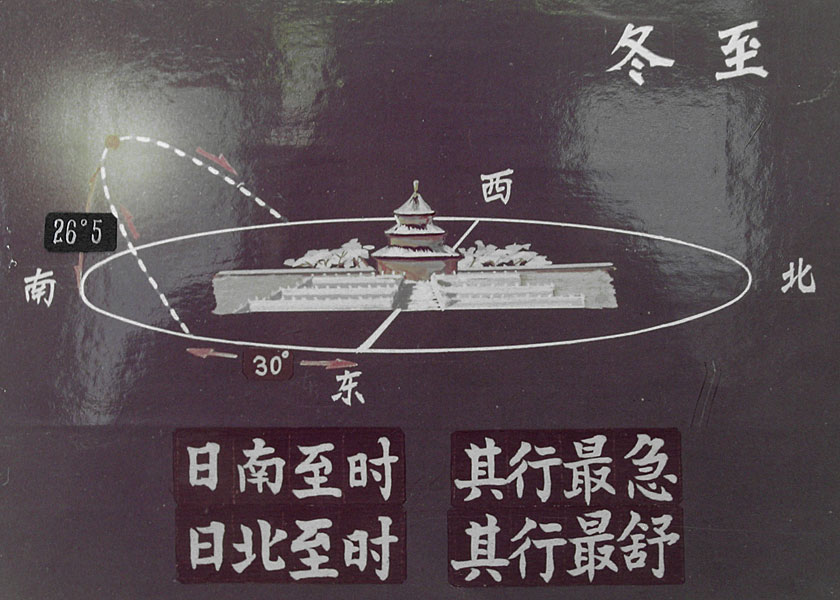 |
| Zhang Heng, within his theory of the cosmos, said that earth is tilted so that the north is higher. He found that it was 26°5' which is just 3° off the modern measurement of 23°27'. The ecliptic (黄道 huángdào) is the apparent path that the sun follows over the earth. It occurs because the earth is tilted in relation to its orbit around the sun, so the earth's equator, as determined by its own revolution, is at an angle to the sun. In the illustration above, the traditional map orientation in China is used; north is on the right.
He also recorded the angular diameter of both the sun and the moon which is 1/736 of the celestial sphere, or rather 29°21″, a difference of 2° from the average value of 31°5″. He improved on the precision of the celestial maps of his day, mapping about 2,500 stars, 124 constellations, and noting the names of the 320 brightest stars. He noted that there were an additional 11,500 small stars only seen by sailors. He placed horizontal and vertical lines on his charts based on the angle of arc, in other words, he invented longitude and latitude measures. The Chinese likened it to throwing a net over the world. Below, Zhang Heng is shown with the reflection of the instruments on top of the sun shadow hall at the Ancient Observatory in Beijing (古观象台). |
 |
http://hua.umf.maine.edu/China/beijing2.html
Last
update: May 2007
© Marilyn Shea, 2007